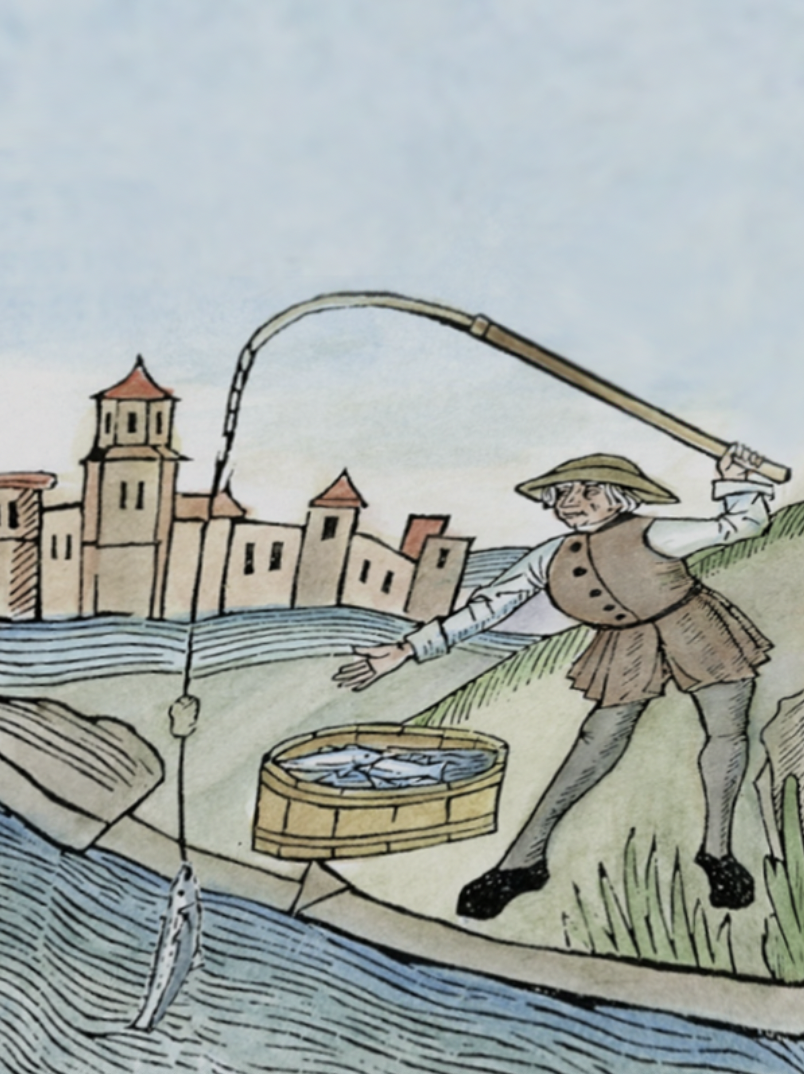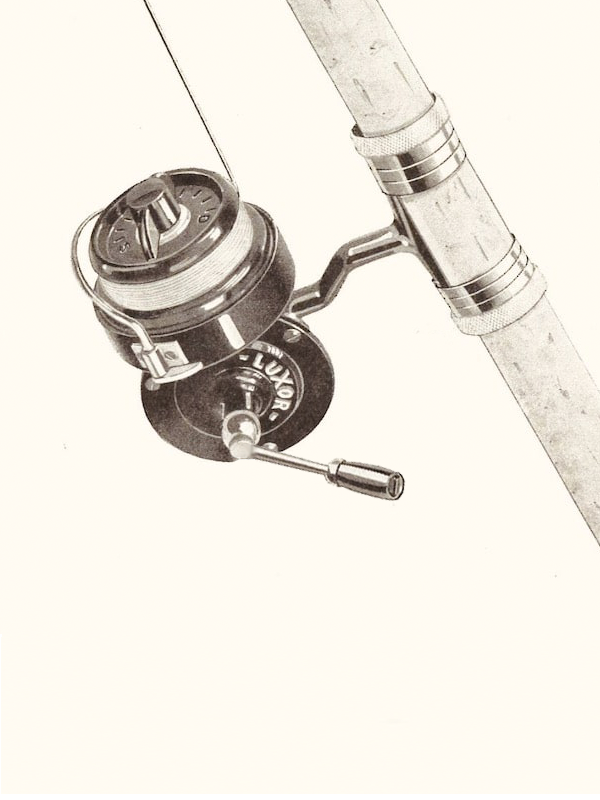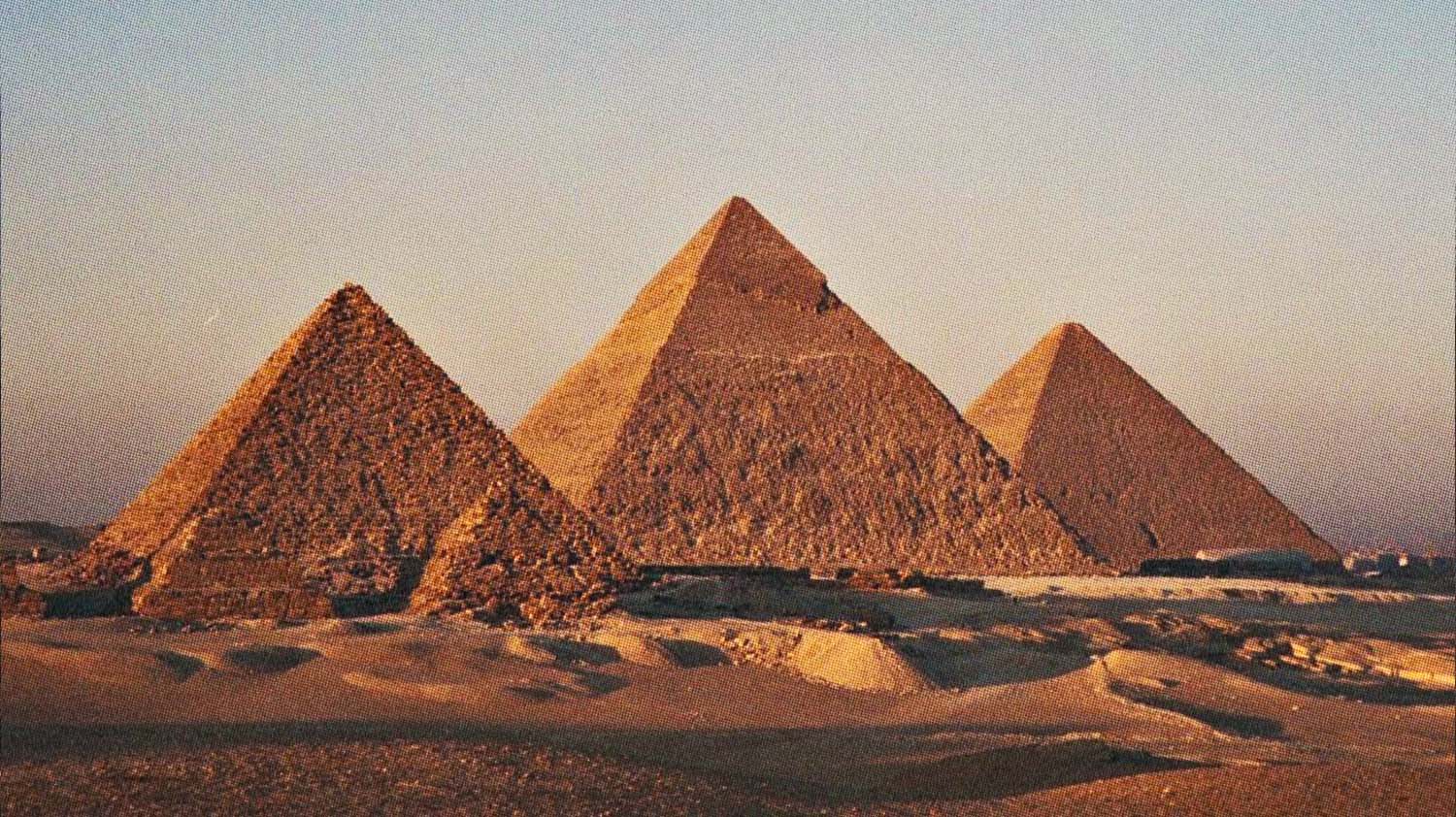
Fishing in ancient Egypt
Fishing in ancient Egypt

Fishing in ancient Egypt… It is probably in the time of the Pharaohs, two to three thousand years before our era, that angling appeared not only for food, but also for recreation.
In the Egypt of the Pharaohs, fishing was a very important activity. The Nile abounded in all sorts of fish species, from the smallest to the largest, and hieroglyphs, paintings and bas-reliefs attest to the importance of fishing in Egyptian civilization. Herodotus, five centuries before our era, reports: “On the banks of the Nile, there is no one who does not have a net. Most of the inhabitants of the delta live absolutely on fish. When they have caught them, they empty them, dry them in the sun, and eat them after this sole preparation. In the hot summer, when the waters of the Nile cover the countryside, the Egyptians fish on the land they plowed in the previous season; as soon as the waters have receded, the fish left in the mud become the prey of the fishermen and constitute a sort of second harvest.”
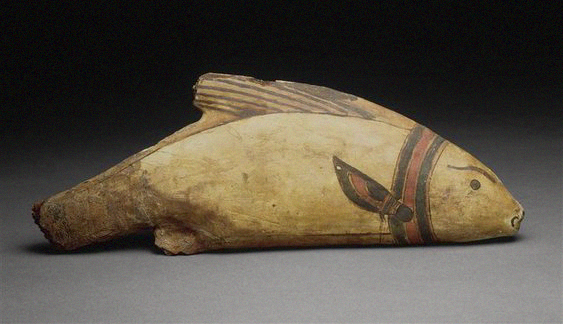
Small sarcophagus in the shape of a fish, about 3000 years old.
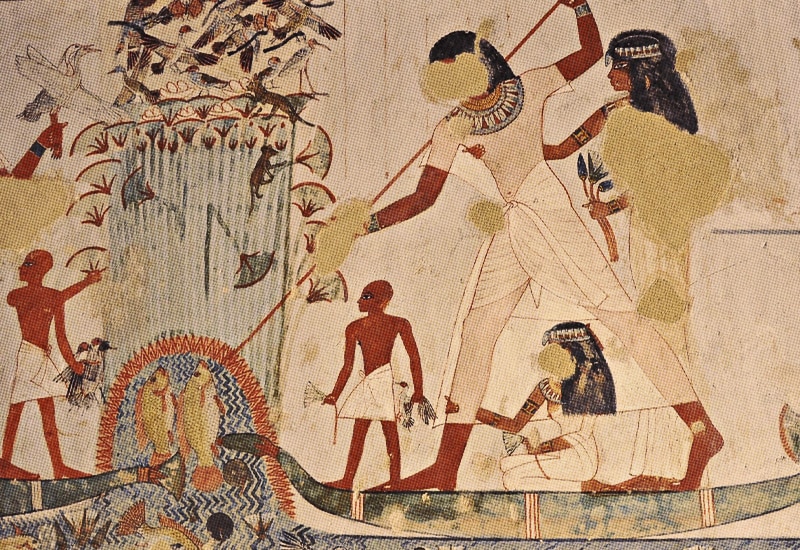
On this painting adorning the tomb of Menna, a noble scribe during the reign of Amenhotep III (XVIIIth Dynasty), two Nile perches, fish with delicious flesh, are clearly visible.
Already 3500 years ago the Egyptian nobles were angling recreationally.
Hieroglyphs and bas-reliefs allow us to easily realize the processes and devices used more than two thousand years before our era, on the banks of the Nile. Representations of fishing with a line, either held directly in the hand, or already through the intermediary of a fishing rod abound and seem to prove that fishing was not only a food activity, but was already a leisure activity, at least in the upper classes of Egyptian society. Some paintings indeed show a character sitting at the back of a boat, holding a fishing rod, while slaves surround him to fan him. The earliest Egyptian hooks found are made of copper and do not have a barb, but an eyelet to attach the line. Large reels, found in tombs, must have been used to reel in the lines used for spearfishing or fishing with a foil, instruments also widely used. But it is obviously on nets and traps that the Egyptians relied when it came to catching large quantities of fish. They seem to have invented practically all forms of nets, which we still use today, from the landing net to the seine, including the hawk, the plaice or the straight gillnet. All of these devices are easily recognizable in tomb paintings. The collections of the Louvre Museum, in the Department of Egyptian Antiquities, show numerous fishing scenes, with different types of nets, but also angling, on bas-reliefs, wall paintings or papyrus scrolls. Being a farming people, the Egyptians were not very interested in maritime matters and probably did not fish at sea, nor did they sail. The Nile and its Delta provided them with as much fish as they could desire.
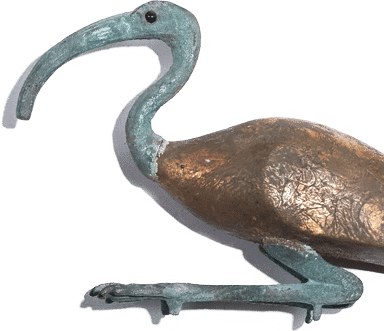

On this 4000 year old limestone bas-relief, a fisherman is trying to net a catfish, while other fish of the same family have taken the bait.
Closer to home, Antony and Cleopatra fished for entertainment.
It was on the Nile that Antony and Cleopatra also indulged in the innocent pleasures of angling. The Roman general, as we know, in order to impress the queen of Egypt, ordered divers to hook fish on his line. But Cleopatra discovered the stratagem, and while pretending to admire the technique and the happiness of Antony, she sent her divers to hang a dried and salted fish on the hook of her lover. In front of the Roman’s discomfited face, she said to him in a great burst of laughter: “General, leave us the line, to us who reign on the Nile, your fishing to you it is to take the cities, the kings and the continents”.
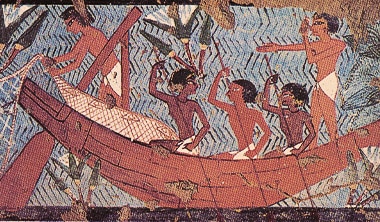
Fresco decorating a tomb, representing fishermen with a net (Cairo Museum).


